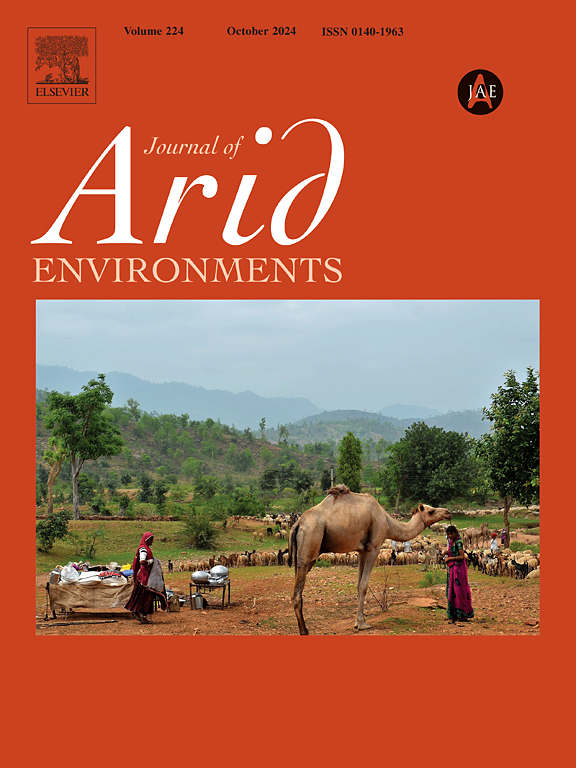Semiarid woody plant functional groups contribute differently to canopy conductance
IF 2.6
3区 环境科学与生态学
Q2 ECOLOGY
引用次数: 0
Abstract
The continuous exploitation of tropical dry forests has caused changes in the hydrological cycle. Although the vegetation-atmosphere relationship is climatically important, studies evaluating the contribution of plant functional groups to canopy conductance remain scarce. This study aimed to evaluate the relationship between the morphophysiological characteristics of different plant functional groups and canopy conductance in a semi-arid region. We assessed canopy conductance, stomatal conductance, leaf temperature, water potential, and xylem vessel biometry in high wood density species (HWD) and low wood density species (LWD). Using repeated measures analysis of variance and Pearson's correlation analysis, we found a strong positive correlation between stomatal conductance and canopy conductance (ρ = 0.917). The HWD group exhibited a higher number of xylem vessels (90%) and thicker vessel walls (37%). These traits enabled greater stomatal conductance activity (66%) throughout the season (dry/rainy). Conversely, the LWD group had wider vessel lumens (47%), which facilitated higher stomatal conductance during the rainy season (33.3%) and increased water potential (70%). These findings demonstrate that functional groups contribute differently to canopy conductance and highlight the importance of functional diversity for maintaining ecohydrological systems in dry forests.

半干旱木本植物官能团对冠层导度的贡献不同
对热带干旱森林的持续开发造成了水文循环的变化。虽然植被-大气关系在气候上具有重要意义,但评价植物功能群对冠层电导的贡献的研究仍然很少。本研究旨在探讨半干旱区不同功能类群植物形态生理特征与冠层导度的关系。研究了高密度树种(HWD)和低密度树种(LWD)的冠层导度、气孔导度、叶温、水势和木质部导管生物特征。通过重复测量方差分析和Pearson相关分析,发现气孔导度与冠层导度呈正相关(ρ = 0.917)。HWD组木质部导管数量较多(90%),管壁较厚(37%)。这些特征使得整个季节(干/雨)的气孔导度活动更高(66%)。相反,LWD组有更宽的管腔(47%),这有助于在雨季提高气孔导度(33.3%)和增加水势(70%)。这些结果表明,功能群对冠层导度的贡献不同,并强调了功能多样性对维持干旱森林生态水文系统的重要性。
本文章由计算机程序翻译,如有差异,请以英文原文为准。
求助全文
约1分钟内获得全文
求助全文
来源期刊

Journal of Arid Environments
环境科学-环境科学
CiteScore
5.70
自引率
3.70%
发文量
144
审稿时长
55 days
期刊介绍:
The Journal of Arid Environments is an international journal publishing original scientific and technical research articles on physical, biological and cultural aspects of arid, semi-arid, and desert environments. As a forum of multi-disciplinary and interdisciplinary dialogue it addresses research on all aspects of arid environments and their past, present and future use.
 求助内容:
求助内容: 应助结果提醒方式:
应助结果提醒方式:


